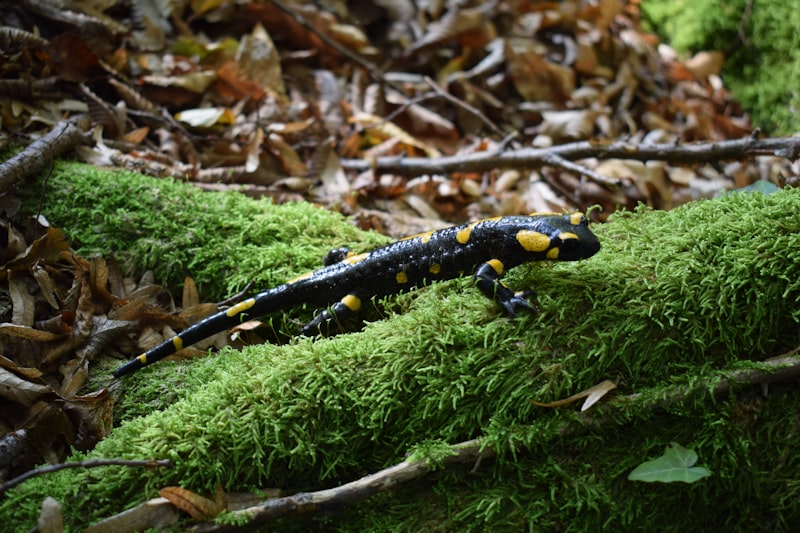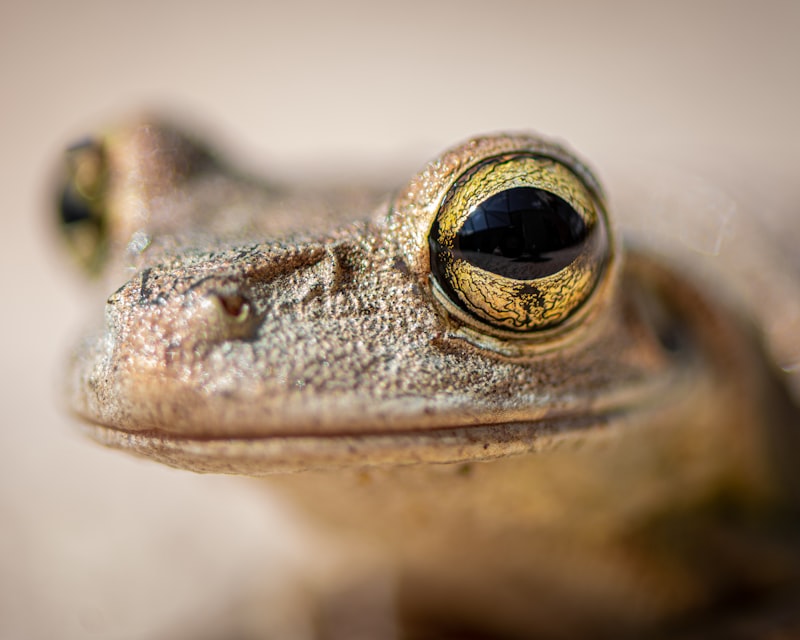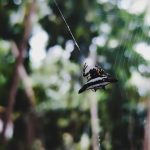Amphibians are fascinating creatures that straddle the line between water and land, embodying a unique blend of aquatic and terrestrial adaptations. These remarkable animals have captivated scientists and nature enthusiasts alike for centuries, offering a glimpse into evolutionary marvels.
One of the defining characteristics of amphibians is their dual life cycle, typically beginning in water as larvae with gills, before transforming into adults that breathe through lungs and often possess the ability to absorb oxygen through their skin. This metamorphosis is a testament to their adaptability to diverse environments.
There are three main groups of amphibians: frogs and toads (Anura), salamanders and newts (Caudata), and caecilians (Gymnophiona). Each group exhibits distinct features and behaviors. Frogs, for example, are known for their powerful hind legs adapted for jumping, while salamanders display remarkable regenerative abilities, capable of regrowing lost limbs.
Amphibians play crucial roles in their ecosystems as both predators and prey. They help control insect populations and serve as indicators of environmental health due to their permeable skin, which makes them highly sensitive to pollutants and changes in habitat.
The diversity of amphibian species is astounding, with over 7,000 known species worldwide. From the colorful poison dart frogs of Central and South America to the giant Chinese salamander, which can reach lengths of up to six feet, each species contributes uniquely to the tapestry of biodiversity.
However, amphibians face significant threats, including habitat loss, climate change, pollution, and disease outbreaks such as chytridiomycosis. Conservation efforts are crucial to protecting these vulnerable species and preserving the delicate balance of ecosystems they inhabit.
Exploring the world of amphibians unveils a realm of evolutionary wonders and ecological importance. Whether diving into the life cycle of a tadpole or marveling at the cryptic patterns of a caecilian, these creatures continue to inspire awe and intrigue among those who study and appreciate the natural world.
From Rainforests to Deserts: Exploring the Diverse Habitats of Amphibians
Imagine a frog perched on a leaf in the dense Amazon rainforest, its vibrant colors blending with the lush greenery. This is the realm of amphibians like tree frogs and poison dart frogs, where moisture and shade create an ideal haven. Here, they find ample insects to feed on and ample foliage to hide among, ensuring their survival with a precision born of millennia of evolution.
Contrast this with the harsh landscape of a desert, where the sun beats down relentlessly and water is scarce. Yet even here, amphibians have carved out niches for themselves. Take the spadefoot toad, for instance, which spends most of its life buried deep underground, emerging only briefly during rare rainy spells to breed in temporary pools. Its ability to survive extreme dehydration is nothing short of miraculous, relying on adaptations such as burrowing behavior and specialized skin.
Amphibians embody the adaptability of life itself. From the torrential downpours of rainforests to the relentless sun of deserts, they have evolved strategies to thrive where few others can. Their permeable skin allows them to absorb moisture in humid environments while minimizing water loss in arid ones. This adaptability is not just a survival mechanism but a testament to the ingenuity of evolution.
Exploring the diverse habitats of amphibians reveals a world of wonder and complexity. Each species has its own story of adaptation, each ecosystem its own challenges and rewards. As we delve deeper into these habitats, we uncover the intricate web of life that supports amphibians and, in turn, depends on them.
Amphibians remind us that life finds a way, even in the most unlikely of places. Their journey from rainforests to deserts is a testament to the resilience and resourcefulness that define the ultimate survivors of the natural world.
Ancient Wonders: Evolutionary History of Amphibians Revealed
Did you know that amphibians, those fascinating creatures that can live both on land and in water, have a history that stretches back millions of years? These incredible beings have evolved through ages, adapting to changing environments and leaving a rich tapestry of evolutionary clues for scientists to unravel.
Amphibians are like nature’s pioneers, venturing onto land long before other vertebrates dared to follow. Their evolutionary journey is a testament to resilience and adaptation. From the earliest labyrinthodonts of the Devonian period to the diverse species we see today, amphibians have undergone remarkable transformations.

One of the most intriguing aspects of their evolutionary history is their transition from aquatic to terrestrial life. Imagine the first amphibians cautiously navigating the unfamiliar terrain of prehistoric Earth, their fins adapting into limbs capable of supporting their weight. It’s a tale of perseverance and innovation, where survival depended on the ability to exploit new ecological niches.
The fossil record has been instrumental in piecing together this evolutionary puzzle. Fossils of ancient amphibians provide snapshots of their anatomy and behavior, offering insights into how they lived and interacted with their environment. Each fossil unearthed is like a time capsule, preserving moments from the distant past and helping scientists reconstruct the evolutionary timeline of these remarkable creatures.
Today, amphibians continue to be an integral part of our ecosystem, despite facing numerous challenges such as habitat loss and climate change. Their ability to inhabit both land and water makes them uniquely adaptable, but also vulnerable to environmental shifts.
Understanding the evolutionary history of amphibians not only sheds light on their past but also informs conservation efforts aimed at protecting them for future generations. By studying their adaptations and responses to ancient environmental changes, scientists can better predict how they might cope with modern challenges.
The evolutionary history of amphibians is a testament to nature’s ingenuity and the resilience of life itself. As we uncover more about their ancient wonders, we gain a deeper appreciation for these remarkable creatures and the role they play in the complex web of life on Earth.
Beyond Frogs and Toads: Discovering Lesser-Known Amphibian Species
Amphibians are often overshadowed by their more charismatic counterparts like frogs and toads. However, the world of amphibians is rich and diverse, filled with lesser-known species that are equally fascinating. These creatures, with their unique adaptations and habitats, play crucial roles in ecosystems worldwide.
One such remarkable amphibian is the Axolotl (Ambystoma mexicanum), native to Mexico. Known for its neotenic features, this salamander retains its larval characteristics throughout its life, including external gills used for breathing underwater. It has become an icon of regeneration due to its ability to regrow lost limbs—a trait that has fascinated scientists for decades.
Moving to the rainforests of Central and South America, we encounter the Glass Frogs (Centrolenidae family). These translucent creatures have skin so clear that you can see their internal organs. Found mostly near streams and rivers, they are masters of camouflage, blending seamlessly into their leafy surroundings.
In the depths of the Amazon rainforest, the Surinam Toad (Pipa pipa) stands out with its peculiar appearance and unique reproductive habits. Unlike most frogs, the female carries fertilized eggs on her back, where they embed into her skin until fully developed tadpoles emerge—an adaptation that ensures the offspring’s safety until they are ready to swim away.
Venturing into the deserts of North America, the Spadefoot Toads (Scaphiopodidae family) thrive in arid conditions by burrowing underground to escape the heat. They emerge after rains, breeding rapidly in temporary pools—a survival strategy honed over millions of years in harsh environments.
Lastly, in Southeast Asia, the Wallace’s Flying Frog (Rhacophorus nigropalmatus) exhibits an extraordinary ability: it can glide between trees using its webbed feet and extensive webbing between its limbs—an adaptation that allows it to escape predators and reach new feeding grounds efficiently.
Survival Strategies: How Amphibians Adapt to Both Land and Water
Amphibians are masters of adaptation, seamlessly navigating between aquatic and terrestrial habitats. Their survival strategies are a marvel of evolution, finely tuned to thrive in diverse environments. From frogs to salamanders, these creatures have developed unique physiological and behavioral traits to conquer the challenges of both land and water.
One key adaptation is their dual respiratory system. As tadpoles, amphibians breathe through gills underwater. Upon metamorphosis into adults, many develop lungs or utilize their moist skin for gas exchange on land. This flexibility in breathing mechanisms ensures they can survive in varying oxygen conditions whether submerged or on the ground.

Skin plays a crucial role in their survival toolkit. Amphibians possess permeable skin that facilitates gas exchange and water absorption. While this makes them susceptible to dehydration on land, it also allows for efficient uptake of oxygen and even some nutrients through their skin. Some species have evolved mucus glands to maintain skin moisture, crucial for surviving dry spells between rain showers.
Behavioral adaptations further enhance their survival chances. Many amphibians exhibit nocturnal habits to avoid daytime predators and reduce water loss through evaporation. Their ability to burrow into moist soil or find refuge in leaf litter helps regulate body temperature and conserve moisture—a vital strategy in climates prone to rapid environmental changes.
Amphibians’ adaptation to both land and water showcases nature’s ingenuity. Their ability to switch between environments highlights their resilience and evolutionary success. By understanding these survival strategies, we gain insights into how life flourishes in the dynamic interface between aquatic and terrestrial ecosystems.
Endangered Guardians: Amphibians as Indicators of Ecosystem Health
Imagine a pond where frogs croak softly under moonlit skies. These amphibians are not just adding to the ambience; they are indicating the health of their habitat. Their sensitivity to environmental changes, such as water quality and pollution levels, makes them invaluable indicators for scientists and conservationists alike.
Just like canaries in coal mines warned miners of toxic gases, amphibians warn us of environmental hazards. Their permeable skin absorbs pollutants from water and air, making them extremely vulnerable to habitat degradation. When amphibian populations decline or disappear from an area, it signals broader ecosystem distress.
Take the mountain yellow-legged frog, native to California’s Sierra Nevada. Its dwindling numbers reflect not only habitat loss but also the impacts of climate change and introduced pathogens. As these frogs vanish, so too does their role in regulating insect populations and providing a food source for other species.
In tropical rainforests, frogs and toads contribute to nutrient cycling by consuming insects and being preyed upon by larger predators. Their absence disrupts this delicate balance, leading to cascading effects on plants, animals, and even human communities dependent on healthy ecosystems.
Conservation efforts are crucial to preserving amphibian diversity. From creating protected habitats to controlling invasive species, every action counts. Educating communities about the importance of amphibians can foster a deeper appreciation for these ecological sentinels and inspire collective action to safeguard their future.
Masters of Metamorphosis: The Incredible Life Cycle of Amphibians
As they grow, tadpoles undergo a miraculous transformation. Legs develop, tails shrink, and lungs replace gills, marking the start of their shift towards terrestrial life. This process, called metamorphosis, is like nature’s magic trick—where fins turn into limbs, and underwater dwellers emerge as creatures adapted to live both on land and in water.
The amphibian’s life cycle exemplifies adaptation and resilience. Each stage serves a purpose, from the initial vulnerability of eggs and aquatic larvae to the adult’s ability to navigate diverse habitats. This evolutionary flexibility not only ensures survival but also enriches ecosystems by bridging aquatic and terrestrial worlds.
Witnessing amphibian metamorphosis is akin to watching a caterpillar transform into a butterfly—a captivating display of nature’s creativity and adaptability. It prompts us to ponder our own capacity for change and growth. How do these creatures, born in water, find their place on land? How does each transformation prepare them for their role in the ecosystem?
Understanding the life cycle of amphibians unveils nature’s intricate design and teaches us valuable lessons about adaptation and resilience. It’s a reminder that life’s journey, like that of an amphibian, is a series of transformations—each phase preparing us for the challenges and wonders of the world around us.
Frequently Asked Questions
What are amphibians and what makes them unique?
Amphibians are vertebrate animals known for their dual life stages in water and on land. They possess moist skin that aids in gas exchange and lay eggs in water. Unique adaptations include metamorphosis from larvae to adults and a dependence on both aquatic and terrestrial habitats.
What are the major threats to amphibian populations?
Learn about the significant threats facing amphibians, including habitat loss, pollution, climate change, disease, and invasive species.
Where do amphibians live and what habitats do they prefer?
Discover where amphibians live and their preferred habitats with our concise guide. From lush rainforests to freshwater ponds, these adaptable creatures thrive in diverse environments worldwide.
How do amphibians reproduce and develop from eggs to adults?
Learn about the fascinating life cycle of amphibians, from their initial development as eggs through metamorphosis into fully grown adults. Discover the stages and adaptations that enable these creatures to thrive both in water and on land.
How many species of amphibians exist worldwide?
Learn about the global diversity of amphibians, including the approximate number of known species and where they can be found.


